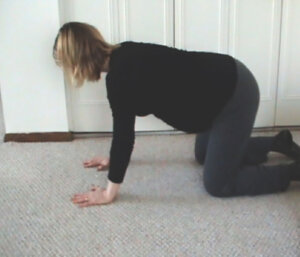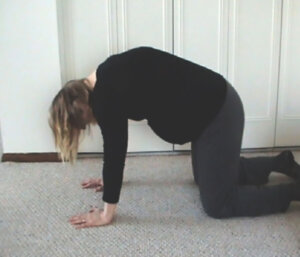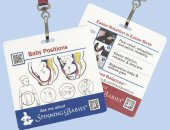When should you do it?
- Any time in pregnancy or labor for maternal positioning with gravity and movement
- After a long day and you’re in need of some relaxation
- For any fetal position, because it’s comforting for women
- For the OP baby when active
- When the baby hasn’t dropped after 38 weeks
- Any time after 32 weeks, or as the 8th month begins
- When the baby is actively kicking and moving around. When the baby is active there is a chance his or her intention is to find a better, more comfortable fit with the brim of the pelvis.
Please note: This activity is only supportive, however, and shouldn’t be considered a main activity to rely on for improving fetal position (i.e. flipping a breech, turning an OP baby to OA, etc.).
When should you not do it?
You shouldn’t do the pelvic tilt if your wrists are too sore or your knees hurt. To help your wrists, see if you can support yourself by leaning over an exercise ball or the back of a couch. If your knees are sore, try putting a pillow or a soft blanket under them.
You could also try this while side-lying, standing, or on your back with your knees bent.
Before doing Pelvic Tilts
Put a tightly rolled hand towel under your palms by the base of your thumb to set your palms in a more comfortable angle.
After doing Pelvic Tilts
Some women will do a “Downward Dog” yoga position after doing “Cat-Cows” (the yoga variation for Pelvic Tilts). If you want to do these, use a yoga mat.








